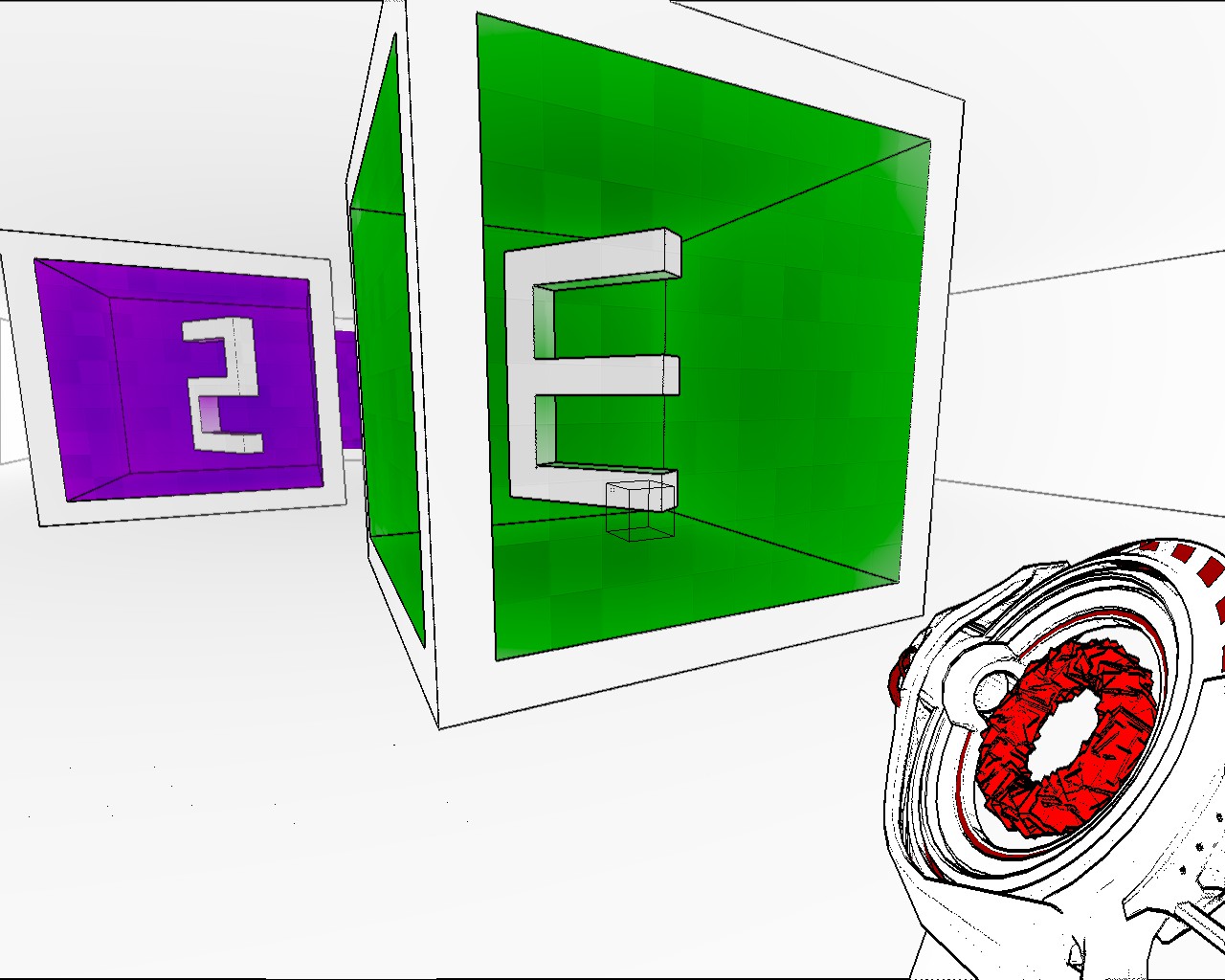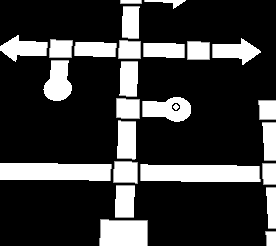The room you're in isn't a puzzle and thus cannot be solved.
It's a peak behind the curtains, so to speak, to show you some of the magic that happens in the game. My guess is that it's to show you how the 4D art gallery works - that it combines different states depending on where you stand. I also think the output cube is the one you can walk around without seeing it "twitch" and change states while you're clearly looking at one side.
EDIT: Since my answer isn't clear enough, I'll use some screenshots to (hopefully) better explain my theory.
There are 4 cubes inside the room. One of said cubes (the one closest to the entrance), has transparent sides. In the screenshot below all 4 cubes are visible. Also, since it'll be important later on, lets define 2 axis in this screenshot: X (moving left-right) and Y (moving towards the back wall and towards the entrance). This will be important later on.

The cube on the left contains 2 states - it will show a 1 or a 3, depending on where the player is positioned. Since this room is a "look how it works" kind of room, the player can see the cube change states.


The cube(s) in the middle contain 2 states. It will show either a 2 or a 4 depending on the players position. Like before, the player can see the states being changed. The cube with the transparent side already shows a "half-finished" product (thus the arrow on the floor), as the player will never witness this cube "twitch" between states because the player can only see one numbered-side at a time.


Note, that the 1-3 cube will change states when the player moves on a different axis than the 2-4 cube! Ie. the 1-3 cube will change states when the player moves along the X axis, and the 2-4 cube will change states when the player moves along the Y axis.
Below is the final, output cube. The player will never see it "twitch" (like the other cubes in the room), as it's the final product, a sum, so to speak, of the other cubes in the room and their states. In other words, the sides of this cube change, but the player never witnesses it, because it only occurs to sides that aren't visible.

PS. As it is, the puzzles (and the game in general) make a LOT of sense. Granted, some of them were more abstract than others, but they all fit well together. There are number of "peek behind the curtains" rooms in the game, showing how things work
like a room where you can see the optimization mechanics to reduce the number of polygons when cubes are placed
or showing how things were planned (during development) or are planned in the final version
like the room showing the layout for Finding the Seams maze.
If this DOES turn out to be a puzzle room, then it would be a really poor exception, and I think I'll need to change my opinion of the game. >_<'









